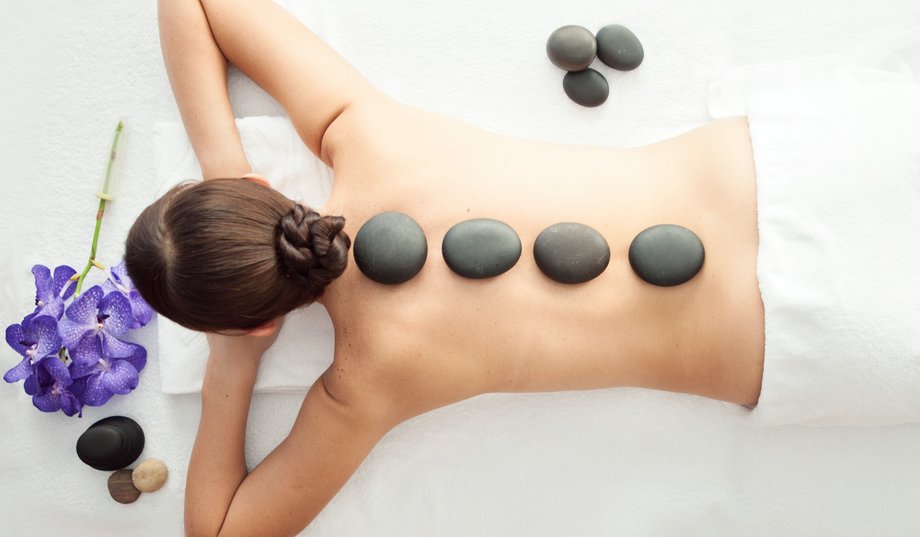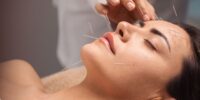Tuina Massage Vs. Swedish Massage: Contrasting Techniques And Therapeutic Benefits

This article aims to compare and contrast the techniques and therapeutic benefits of Tuina massage and Swedish massage.
Tuina massage, originating from China, has a long history dating back thousands of years and is an integral part of traditional Chinese medicine.
On the other hand, Swedish massage, developed in the 19th century by Per Henrik Ling, is widely practiced in Western countries.
Tuina massage involves a combination of acupressure, stretching, and deep tissue manipulation, while Swedish massage focuses on long, flowing strokes and kneading techniques.
Both techniques offer various therapeutic benefits such as pain relief, stress reduction, and improved circulation.
Understanding the differences between Tuina and Swedish massage techniques and their unique therapeutic benefits can assist individuals in choosing the most suitable massage technique for their specific needs.
Origins and History of Tuina Massage
The origins and historical development of tuina massage can be traced back to ancient China, where it has been practiced for over 2,000 years. Tuina, which means ‘push and grasp,’ is a form of therapeutic massage that focuses on the manipulation of the body’s energy channels, known as meridians.
It is based on the principles of Traditional Chinese Medicine (TCM) and incorporates techniques such as kneading, rolling, and pressing various parts of the body. Tuina massage was initially used as a primary healthcare modality in ancient China, and its effectiveness in treating a wide range of health conditions led to its continued practice and development over the centuries.
Today, tuina massage is recognized as a separate branch of TCM and is widely used for its therapeutic benefits, including pain relief, stress reduction, and improved overall well-being.
Origins and History of Swedish Massage
Developed by Per Henrik Ling in the early 19th century, Swedish massage is a popular form of bodywork that focuses on long, smooth strokes.
Ling, a Swedish physiologist, created this technique as a way to improve circulation and promote relaxation.
The main goal of Swedish massage is to release tension and restore balance in the body, making it a soothing and therapeutic treatment option.
Developed by Per Henrik Ling
Per Henrik Ling is credited with the creation of a massage technique that has become known as Swedish massage. Born in 1776 in Sweden, Ling was a prominent figure in the field of physical education and gymnastics. He developed a system of therapeutic exercises and manipulations, which eventually led to the establishment of Swedish massage.
Ling’s approach incorporated various techniques, including effleurage, petrissage, friction, tapotement, and vibration. His method aimed to improve blood circulation, relieve muscle tension, and promote overall relaxation. Ling’s contributions to the field of massage therapy were significant, and his techniques continue to be widely practiced and taught today.
The development of Swedish massage by Per Henrik Ling laid the foundation for the modern understanding and application of massage therapy.
Focus on Long, Smooth Strokes
One key aspect of Swedish massage involves the use of long, smooth strokes that aim to promote relaxation and improve blood circulation.
These strokes are typically performed using the palms, fingertips, or forearms of the massage therapist. The therapist applies gentle pressure to the muscles and tissues, moving in the direction of the blood flow towards the heart.
This technique helps to increase the oxygen flow in the bloodstream and remove toxins from the body. The long, gliding strokes also help to release tension and knots in the muscles, promoting a sense of deep relaxation and stress relief.
Additionally, the smooth and rhythmic movements of Swedish massage can stimulate the parasympathetic nervous system, leading to a state of calmness and tranquility.
Overall, the focus on long, smooth strokes in Swedish massage contributes to its therapeutic benefits of relaxation, improved circulation, and reduced muscle tension.
Techniques Used in Tuina Massage
In the techniques used in tuina massage, various manual manipulations such as kneading, rolling, and pressing are applied to specific acupoints and meridians on the body. These techniques are designed to invigorate the flow of Qi (energy) within the body and promote overall well-being.
Kneading involves applying pressure to the muscles and soft tissues in a circular motion, which helps to relax tension and improve circulation.
Rolling techniques utilize the palms, fingers, and knuckles to roll and stretch the muscles, releasing any tightness or stiffness.
Pressing involves applying sustained pressure to specific acupoints, which can help alleviate pain and stimulate the body’s natural healing response.
These techniques are integral to tuina massage and contribute to its therapeutic benefits.
Techniques Used in Swedish Massage
The techniques used in Swedish massage involve long, flowing strokes and kneading motions that aim to relax the muscles, relieve tension, and improve circulation, creating a soothing and rejuvenating experience for the recipient. These techniques are based on the principles of anatomy and physiology.
Here are some key techniques used in Swedish massage:
- Effleurage: This technique involves long, gliding strokes that help to warm up the muscles and promote relaxation.
- Petrissage: This technique involves kneading, rolling, and squeezing motions that aim to release muscle tension and improve blood flow.
- Friction: This technique involves deep, circular movements that help to break down adhesions and knots in the muscles.
- Tapotement: This technique involves rhythmic tapping, hacking, and cupping motions that stimulate the muscles and promote circulation.
By combining these techniques, Swedish massage therapists are able to provide a therapeutic and relaxing experience that can help to alleviate stress, reduce pain, and improve overall well-being.
Therapeutic Benefits of Tuina Massage
Tuina massage, a traditional Chinese therapeutic technique, offers a distinct set of therapeutic benefits that differentiate it from Swedish massage. While Swedish massage primarily focuses on relaxation and improving blood circulation, tuina massage aims to restore the body’s balance and promote overall well-being.
This ancient form of massage involves a combination of techniques, including acupressure, stretching, and deep tissue manipulation, which target specific areas of the body to alleviate pain, reduce tension, and improve mobility.
Tuina massage also incorporates the principles of traditional Chinese medicine, such as meridian theory and the concept of qi, to address imbalances in the body’s energy flow. By stimulating specific acupoints and meridians, tuina massage can effectively treat a wide range of conditions, including musculoskeletal disorders, digestive issues, and stress-related ailments, making it a valuable therapeutic modality in the field of alternative medicine.
Therapeutic Benefits of Swedish Massage
Swedish massage, a popular form of therapeutic bodywork, offers a wide range of benefits that promote relaxation, improve circulation, and enhance overall well-being.
This type of massage primarily focuses on effleurage, petrissage, tapotement, friction, and vibration techniques to manipulate soft tissues and muscles. Through these techniques, Swedish massage can increase blood flow, oxygenate tissues, and remove metabolic waste products from the body. This can result in reduced muscle tension, alleviation of pain, and improved flexibility and mobility.
Additionally, Swedish massage has been found to stimulate the parasympathetic nervous system, promoting a state of deep relaxation and reducing stress and anxiety. The soothing nature of this massage technique can also improve sleep quality and enhance the body’s natural healing abilities.
Overall, Swedish massage provides numerous therapeutic benefits for both the physical and mental well-being of individuals.
Choosing the Right Massage Technique for Your Needs
When selecting a massage technique, it is important to consider your specific needs and desired outcomes.
Tuina massage and Swedish massage are two popular options with contrasting techniques and therapeutic benefits.
Tuina massage, a form of Chinese therapeutic massage, focuses on applying pressure to specific points on the body to promote healing and balance. It is often used to treat musculoskeletal conditions, such as chronic pain and injuries.
On the other hand, Swedish massage, a Western massage technique, involves long, gliding strokes, kneading, and tapping to relax the muscles and improve circulation. It is commonly used for stress reduction, relaxation, and overall well-being.
To choose the right massage technique, it is essential to assess your goals and consult with a qualified massage therapist who can provide personalized recommendations based on your individual needs.
Frequently Asked Questions
Are there any age restrictions for receiving Tuina massage or Swedish massage?
There are typically no age restrictions for receiving tuina massage or Swedish massage. However, it is advisable for individuals with certain medical conditions or frailty to consult with a healthcare professional before undergoing any type of massage therapy.
Can Tuina massage or Swedish massage help with specific medical conditions?
Both tuina massage and Swedish massage have been found to be effective in helping with specific medical conditions. However, further research is needed to determine the specific benefits and limitations of each technique in treating different ailments.
Are there any potential side effects or risks associated with Tuina massage or Swedish massage?
There are potential side effects and risks associated with both tuina massage and Swedish massage. These may include muscle soreness, bruising, and temporary discomfort. It is important to consult with a trained professional to minimize these risks.
How long do the effects of Tuina massage or Swedish massage typically last?
The effects of tuina massage or Swedish massage typically last for a variable duration, ranging from a few hours to several days. The duration of the effects can be influenced by factors such as individual response, the severity of the condition being treated, and the frequency of massage sessions.
Are there any specific contraindications or precautions to consider before getting a Tuina massage or Swedish massage?
Some general contraindications and precautions to consider before getting a tuina massage or Swedish massage include open wounds, acute injuries, infectious skin conditions, certain medical conditions, and pregnancy. It is important to consult a healthcare professional before receiving any type of massage therapy.







